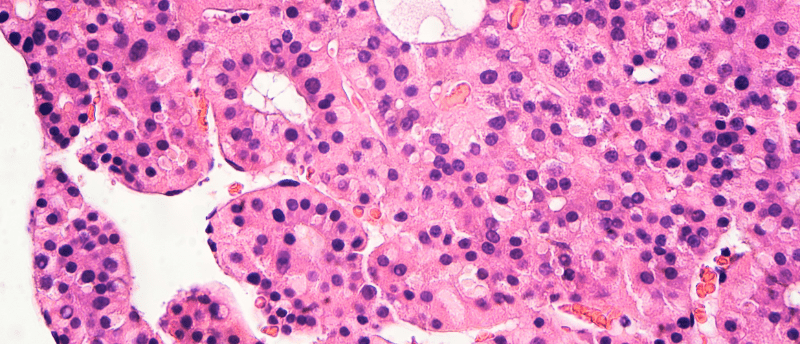Blood biomarkers in the TGF-β pathway and their association with liver cancer

Hepatocellular carcinoma (HCC) ranks as the third most common cause of cancer-related mortality globally and is typically only detected in advanced, untreatable stages. Despite the critical need for blood-based biomarkers to facilitate early diagnosis, studies that investigate ongoing biological processes to pinpoint risk-stratifying biomarkers are scarce. In a new study, researchers use a combination of proteomic markers with the TGF-β family and machine learning to aid identification of HCC and non-HCC patients suffering from cirrhosis.
In this collaborative study published in Genes & Cancer, the research team describes how they aim to address this gap through the use of the TGF-β pathway due to its significance in both liver disease and cancer, as confirmed by extensive previous research involving animal models and human studies.
The team explained:
“Alterations in the TGF-β signaling pathway could reflect a continuum of fibrosis to cirrhosis to cancer in the liver. Thus, we hypothesize that the TGF-β pathway-enriched biomarkers may serve as biomarkers in the evolution of HCC and stratify patients at risk for HCC. In addition, we hypothesized that the integrated animal model-to-human studies program would yield new TGF-β driven mechanistic biomarkers that could be valuable in yielding additional biomarkers that could stratify the risk of HCC.”
With the use of machine learning techniques to analyze blood levels of 108 proteomic markers within the TGF-β family, the scientists identified a distinctive pattern that can distinguish between HCC and non-HCC individuals from a cohort of 216 patients with cirrhosis — scarring of the liver caused by long-term liver damage. This pattern, coined TGF-β–based Protein Markers for Early Detection of HCC (TPEARLE), consists of 31 biomarkers. Notably, 20 patients with cirrhosis alone exhibited a pattern resembling that of HCC, indicating the potential of undiagnosed cases or a heightened risk for HCC development within this specific subgroup.
You may also be interested in:
- Blood Biomarkers Help Identify Individuals with Fragile X Syndrome
- AI-supported biomarker panel identifies early-stage cancers with >99% accuracy
- Minimally invasive and highly accurate liver fibrosis test
Furthermore, the team identified two additional biologically significant biomarkers, Myostatin and Pyruvate Kinase M2 (PKM2), which exhibited a significant correlation with HCC. These biomarkers were subjected to testing for risk stratification in HCC using multivariable models adjusted for demographic and clinical factors, as well as batch and site variations.
The team continued:
“[These biomarkers] potentially indicate the presence of HCC early in its evolution and before it is manifest as a detectable lesion, thereby providing a set of markers that may be able to stratify risk for HCC.”






